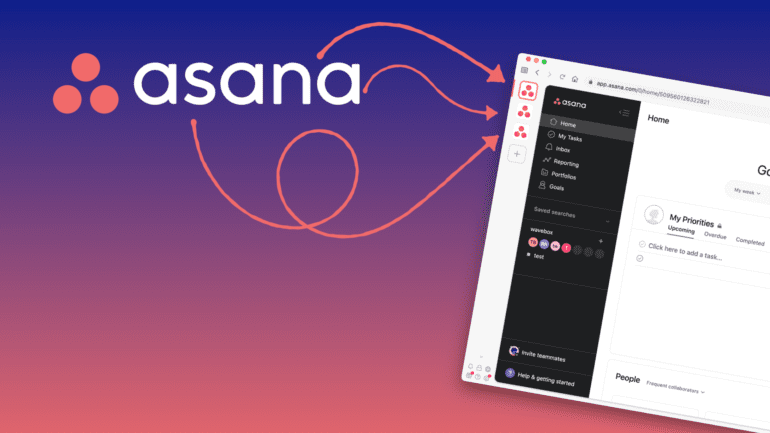TL;DR:
- Asana introduces AI-powered capabilities to streamline decision-making and enhance team productivity.
- Asana Intelligence monitors team capacity and business priorities, offering resource recommendations.
- The new capabilities create goal-based plans, improve workflows, and provide a writing assistant.
- Asana Intelligence offers instant summaries of meetings and conversations.
- Asana focuses on refining existing content rather than generating new content.
- Asana’s AI principles emphasize human-centered AI, co-creation, and user control.
- Asana’s advancements empower businesses to make better decisions and increase efficiency.
Main AI News:
Asana, the renowned work management platform, is revolutionizing the way businesses make decisions and enhance productivity with its cutting-edge AI-powered features. These groundbreaking advancements, fueled by Asana’s newly introduced AI offering called Asana Intelligence, leverage the power of predictive AI tools and large language models (LLM) provided by OpenAI’s APIs. The objective is to empower users to effectively manage ongoing projects and stay ahead in today’s fast-paced business environment.
The Potential of Asana Intelligence
Harnessing the power of Asana Intelligence, teams can now effortlessly monitor their capacity and navigate ever-evolving business priorities. This innovative capability provides resource recommendations, enabling teams to optimize their efforts and achieve their objectives efficiently. Furthermore, Asana Intelligence is designed to uncover hidden obstacles and issues that could hinder progress toward company goals, providing invaluable insights for strategic decision-making.
Supercharging Productivity
Asana Intelligence takes productivity to new heights by offering automated, goal-based plans tailored to individual teams. Suggesting and implementing workflow improvements, streamlines processes and drives faster results. Moreover, it includes a sophisticated writing assistant that enhances the clarity and tone of written messages and communications. It is important to note that the writing assistant does not generate new content; instead, it refines and adjusts previously written material, ensuring polished and effective communication.
Instant Summaries for Seamless Collaboration
In addition to its remarkable productivity-enhancing features, Asana Intelligence provides instant summaries that transcribe and condense to-dos and highlights from meetings and conversations into comment threads. This functionality enables teams to quickly grasp key takeaways, fostering collaboration and ensuring that everyone remains aligned and informed.
The Balancing Act: Asana’s Approach
While Asana embraces generative AI technology in its new capabilities, the company maintains a level of skepticism regarding its value. Alex Hood, Asana’s chief product officer, raises valid concerns about generative AI potentially producing content that does not accurately reflect the day-to-day operations of a company. Therefore, Asana’s focus is on summarizing and improving existing content rather than generating entirely new material. The company believes that simplifying and summarizing existing content can help users become more efficient, as the cost of generating new content decreases and the human cost of reviewing it increases.
Guided by AI Principles
As part of its commitment to responsible AI development, Asana has established a set of AI principles that govern its research and development efforts. The company’s Human-Centered AI principles center around leveraging AI to aid human development, prioritizing safety and transparency in both practice and product. Asana strongly believes that AI should empower individuals, supporting and celebrating their contributions. It recognizes the importance of designing for teams composed of both humans and AI, fostering optimal workflows and partnerships.
Nonetheless, Asana firmly upholds that individuals are ultimately responsible for their own decisions. While Asana Intelligence assists and enhances human decision-making, the ultimate responsibility lies with people. Asana also respects the choice and control given to users over the role of AI in their work, offering the flexibility to disable AI technology if desired. Lastly, Asana places significant emphasis on prioritizing security and transparency when collaborating with AI vendors and developing AI solutions.
With its groundbreaking AI capabilities and commitment to responsible AI practices, Asana continues to revolutionize the way businesses operate. By leveraging Asana Intelligence, organizations can navigate complex decision-making processes, drive productivity, and achieve their goals with unparalleled efficiency and ease.
Conclusion:
Asana’s AI-powered capabilities mark a significant advancement in the market. By leveraging Asana Intelligence, businesses can streamline decision-making processes, optimize resource allocation, and enhance team productivity. The inclusion of automated goal-based plans, workflow improvements, and a writing assistant provides users with valuable tools for achieving faster and more effective results. Asana’s focus on summarizing and improving existing content showcases a thoughtful approach that prioritizes efficiency and collaboration. With its commitment to human-centered AI and user control, Asana sets a benchmark for responsible AI development in the market.

